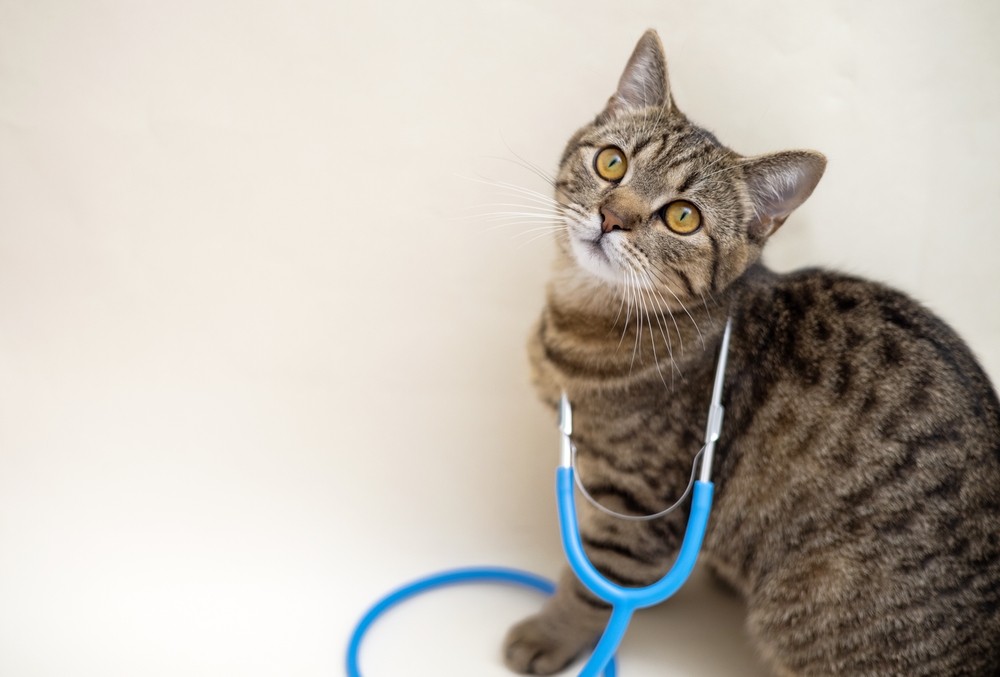Check Your Cat’s Vital Signs at Home
Updated on October 08, 2024

The mysterious ways of cats are one of the reasons we like them so much: They intrigue us, and when they give us their love, it’s as if we’re getting a gift from royalty. But feline mysteries aren’t quite so appealing when it comes to health.
Cats are good at hiding signs of illness, although if you’re an observant cat owner, you can often see through their act. An important part of being observant is knowing what to look for — in other words, having a handle on what’s normal so you can determine what’s not. And yet, I bet not one cat lover in a thousand can pass a pop quiz on what the normal vital signs are in a cat.
Can you? Do you know how to take your cat’s temperature, heart rate and respiratory rate? Do you know how to assess what’s normal for each of those things? Don’t worry if the answer is no; the good news is it’s pretty easy to learn. Here’s what you need to know.
All featured products are chosen at the discretion of the Vetstreet editorial team and do not reflect a direct endorsement by the author. However, Vetstreet may make a small affiliate commission if you click through and make a purchase.
How to Check Your Cat’s Vital Signs at Home
Take your cat’s temperature
If you choose to buy a thermometer that reads your pet’s temperature by merely sticking the probe inside her ear, you’ll have it easy. But it’s not that hard to take a cat’s temperature the old-fashioned way, with a traditional glass thermometer.
Or spend just a little bit more for a digital rectal thermometer, which is easy to read and beeps when it’s ready to remove. If you’re going rectal, lubricate the thermometer with water-based medical lubricant. Gently and slowly insert the device about one or two inches into your cat’s rectum, but don’t force it. Leave the thermometer in place for two minutes (or until it beeps, if it’s digital), and then check and record the temperature.
In a normal, healthy cat, the thermometer should read between 100 and 102.5 degrees Fahrenheit. Call your veterinarian if it’s below 99 or above 103, or if you see evidence of blood, diarrhea or a black, tarry stool on the thermometer.
Take your cat’s heart rate
You’ll need a watch with a second hand, a stopwatch or … your smartphone! Feel your cat’s heartbeat with one hand over his left side, just behind his front leg. Count the number of beats in 15 seconds and multiply by four to get the heart rate in beats per minute (bpm). A normal cat’s heart rate is between 140 and 220 bpm, with a relaxed cat measuring on the low end. Call your veterinarian if the heart rate is too rapid, too slow or irregular.
Take your cat’s respiratory rate
Watch your cat breathe when he is relaxed and standing; focus on the movement of the abdomen and chest wall. Count the number of movements in 60 seconds. (The breathing rate is too slow to count to 15 and multiply by four — take a full 60 seconds to get a better reading.) A normal cat takes between 20 to 30 breaths per minute, with a relaxed cat measuring on the lower end of the scale. Call your veterinarian if the rate is too rapid, or if your cat is panting – the latter’s not really normal in cats, at least not the way we see it in dogs.
See, wasn’t that easy?
The time to learn how to take your cat’s heart rate, respiratory rate and temperature is before you are faced with a sick cat. Practice at home when you and your cat are relaxed so you know what to do when you have a concern. And remember: If you’re having difficulty learning how to check vital signs on your own, ask your veterinarian to show you how the next time you take your cat in for a wellness exam. Because pet lovers and veterinarians are always partners when it comes to keeping pets healthy!
The Importance of Cat Health Insurance
Your cat health insurance policy can help to offset unexpected treatment costs. These costs may include veterinary visits, prescription medications, or procedures such as imaging or surgery.
Find a personalized plan for your cat by using the insurance finder below:

